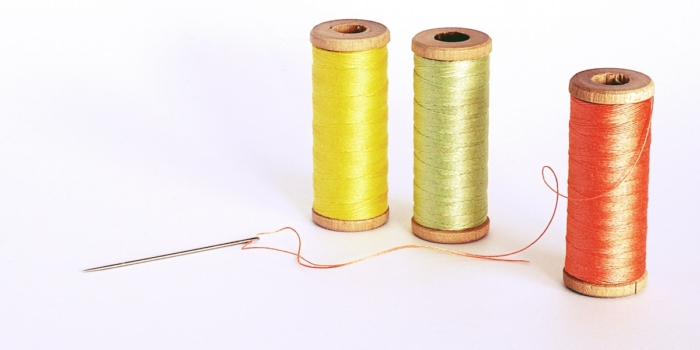 Authors: Professor Raffaella Ocone OBE FREng FRSE (Heriot-Watt University); Professor Thomas Lennerfors (Uppsala University); Professor Sarah Hitt SFHEA (NMITE); Isobel Grimley (Engineering Professors’ Council).
Authors: Professor Raffaella Ocone OBE FREng FRSE (Heriot-Watt University); Professor Thomas Lennerfors (Uppsala University); Professor Sarah Hitt SFHEA (NMITE); Isobel Grimley (Engineering Professors’ Council).
Topic: Soil carbon sequestration and Solar geoengineering.
Engineering disciplines: Chemical engineering; Energy and Environmental engineering.
Ethical issues: Respect for the environment; Social responsibility; Risk.
Professional situations: Public health and safety, Communication.
Educational level: Beginner.
Educational aim: To develop ethical awareness. Ethical awareness is when an individual determines that a single situation has moral implications and can be considered from an ethical point of view.
Learning and teaching notes:
This case involves a dilemma that most engineering students will have to face at least once in their careers: which job offer to accept. This study allows students to consider how personal values affect professional decisions. The ethical aspect of this dilemma comes from weighing competing moral goods –that is, evaluating what might be the better choice between two ethically acceptable options. In addition, the case offers students an introduction to ethical principles underpinning EU environmental law, and a chance to debate ethical aspects surrounding emerging technologies. Finally, the case invites consideration of the injustices inherent in proposed solutions to climate change.
This case study addresses two AHEP 4 themes: The Engineer and Society (acknowledging that engineering activity can have a significant societal impact) and Engineering Practice (the practical application of engineering concepts, tools and professional skills). To map this case study to AHEP outcomes specific to a programme under these themes, access AHEP 4 here and navigate to pages 30-31 and 35-37.
The dilemma in this case is presented in two parts. If desired, a teacher can use Part one in isolation, but Part two develops and complicates the concepts presented in Part one to provide for additional learning. The case allows teachers the option to stop at multiple points for questions and / or activities, as desired.
Learners have the opportunity to:
- identify underlying values of professional situations;
- investigate ethical, technical, and policy implications of emerging technologies;
- practise developing, defending, and delivering arguments;
- debate the potential options of an ethical decision.
Teachers have the opportunity to:
- introduce concepts related to the precautionary principle and environmental justice;
- informally evaluate students’ critical thinking and communication skills.
Learning and teaching resources:
- RAEng/Engineering Council Statement of Ethical Principles
- Solar Geoengineering to Reduce Climate Change: A Review of Governance Proposals
- Soil Carbon Storage
- The Precautionary Principle: Decision-Making Under Uncertainty
- Climate Justice
Summary:
Olivia is a first-generation university student who grew up on a farm in rural Wales and was often frustrated by living in such a remote environment. When she received excellent A levels in maths and sciences, she took a place on a chemical engineering course in London.
Olivia became passionate about sustainability and thrived during her placements with companies that were working on innovative climate solutions. One of the most formative events for her was COP26 in Glasgow. Here, she attended debates and negotiations that contributed to new global agreements limiting global warming to 1.5°C. Following this experience, Olivia has been looking for jobs that would allow her to work on the front line combating climate change.
Dilemma – Part one:
Olivia has received two job offers. One is a very well-paid position at CarGro, a small firm not far from her family farm. This company works on chemical analysis for soil carbon storage – the ability of soil’s organic matter to sequester carbon-rich compounds and therefore offset atmospheric CO2.
The other offer is for an entry-level position at EnSol, a company developing the feasibility of stratospheric aerosol injection. This technology aims to mimic the effect that volcanic eruptions have on the atmosphere when they eject particles into the stratosphere that reflect sunlight and subsequently cool the planet. EnSol is a start-up located in Bristol that has connections with other European companies working on complementary technologies.
While considering these two offers, Olivia recalls an ethics lesson she had in an engineering design class. This lesson examined the ethical implications of projects that engineers choose to work on. The example used was of a biomedical engineer who had to decide whether to work on cancer cures or cancer prevention, and which was more ethically impactful. Olivia knows that both CarGro and EnSol have the potential to mitigate climate change, but she wonders if one might be better than the other. In addition, she has her own goals and motivations to consider: does she really want to work near her parents again, no matter how well-paid that job is?
Optional STOP for questions and activities:
1. Discussion: Personal values – what personal values will Olivia have to weigh in order to decide which job offer to accept?
2. Activity: research the climate mitigation potential of soil carbon sequestration (SCS) and stratospheric aerosol injection (SAI).
3. Discussion: Professional values – based on the research, which company is doing the work that Olivia might feel is most ethically impactful? Make an argument for both companies.
4. Discussion: Wider impact – what impact does the work of these two companies have? Consider this on local, regional, and global scales. Who benefits from their work, and who does not?
5. Discussion: Technical integration – undertake a technical activity in the areas of chemical engineering, energy and / or environmental engineering related to the climate mitigation potential of SCS and SAI.
Dilemma – Part two:
To help her with the decision, Olivia talks with three of her former professors. The first is Professor Carrera, whom Olivia accompanied to COP26. Professor Carrera specialises in technology policy, and tells Olivia about the precautionary principle, a core component of EU environmental law. This principle is designed to help governments make decisions when outcomes are uncertain.
The second is Professor Adams, Olivia’s favourite chemical engineering professor, who got her excited about emerging technologies in the area of climate change mitigation. Professor Adams emphasises the opportunity at EnSol provides, to be working on cutting-edge research and development – “the sort of technology that might make you rich, as well!”
Finally, Olivia speaks to Professor Liu, an expert in engineering ethics. Professor Liu’s latest book on social responsibility in engineering argues that many climate change mitigation technologies are inequitable because they unfairly benefit rich countries and have the potential to be risky and burdensome to poorer ones.
Based on these conversations, Olivia decides to ask the hiring managers at CarGro and EnSol some follow-up questions. Knowing she was about to make these phone calls, both her mother and her best friend Owen (who has already secured a job in Bristol) have messaged her with contradictory advice. What does Olivia ask on the calls to CarGro and EnSol to help her make a decision? Ultimately, which job should Olivia take?
Optional STOP for questions and activities:
1. Activity and discussion: research the precautionary principle – what have been the potentially positive and negative aspects of its effect on EU policy decisions related to the environment?
2. Activity: identify the risks and benefits of SCS and SAI for different communities.
3. Activity: map the arguments of the three professors. Whose perspective might be the most persuasive to Olivia and why?
4. Activity: rehearse and role play phone calls with both companies.
5. Activity: debate which position Olivia should take.
This work is licensed under a Creative Commons Attribution-ShareAlike 4.0 International License.
Any views, thoughts, and opinions expressed herein are solely that of the author(s) and do not necessarily reflect the views, opinions, policies, or position of the Engineering Professors’ Council or the Toolkit sponsors and supporters.




